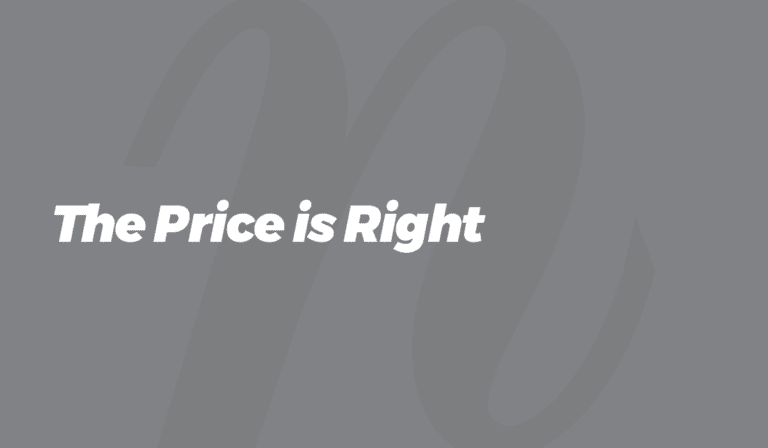Understanding the Cost of Your Labor: 11 Factors You Can’t Ignore
At labor-driven organizations, entire careers have been spent chasing the elusive unicorn of lower workforce costs. For many retailers, wholesalers, logistics ops, fresh food manufacturers, and other large distribution and supply chain companies, those costs almost always dwarf all but one or two other line items.
And yet, for too many of those businesses, real savings remain frustratingly hard to come by. Why is that? How should such a business go about finding those savings opportunities? Where should they even begin to look?
As labor performance partners, nGROUP lives and works with these concerns all day, every day. During more than 20 years of helping clients increase production and lower costs, we’ve come to learn where savings can be found, as well as why they’re often so hard to see.
A problem of scale
The first problem is understanding exactly what we mean by “labor costs.” For some organizations, the sheer size of the overall labor expense can be so large that it’s hard to genuinely grasp what’s really feeding that number.
Lots of large, labor-intensive businesses summarize their General Labor expense under one line item on their P&L. Unfortunately, just staring at that eye-watering amount doesn’t often produce the insights necessary to cause real change. For that, we must get granular with the information behind that amount.
So, what are the most critical drivers of your overall labor costs?
#1 – Pay Rates
Unsurprisingly, what you pay your employees is the biggest component in your overall labor costs. Not only are these driven by national, state, and local laws, but also by regional differences in living costs. Additionally, the Covid pandemic has caused huge changes to pay rates due to increased worker mobility.
#2 – Taxes
An employer’s portion of FICA, FUTA, and SUTA are also major drivers of total labor costs. Of course, these are also controlled by laws and regulations. Understanding the intricacies of the tax code isn’t just for accountants. Large employers need to have a deep understanding of employment taxes, as well.
#3 – Workers’ Compensation Insurance
Your workers’ compensation insurance costs can be a major factor in what you pay for labor. These costs are informed by your industry, your individual business’s claim history, past losses, and other important risk factors.
#4 – Healthcare
With the advent of the Affordable Care Act, the cost of healthcare has become a required part of large employers’ expenditures. It is very possible to deploy specific cost-saving strategies around this factor, but beware that they may eat into your budget through increases in administration, reporting, and maintenance costs.
#5 – Retirement Benefits
One way of ensuring greater retention among your staff is by offering attractive retirement benefits. This may slash the cost of managing high rates of turnover (see #8), but inevitably send more dollars out the door with retiring staff.
#6 – PTO & Holiday Pay
This driver is often an untouchable expense. Employees expect (and the law usually demands) a certain amount of holiday and personal time. As service time goes up, so does the amount of PTO hours needed to satisfy long-time employees. Very little opportunity for cost savings here.
#7 – Training
Knowing how much it costs — and how long it takes — to train workers is a big help in understanding your total labor costs. Beyond just the upfront cost, remember to consider the opportunity cost of training, as well as who you will tap to perform the training. What will it cost you in lost production to assign top workers to train up new ones?
#8 – Turnover
How much does it cost your organization in lost production whenever a certain position is left open? It’s crucial to invest in ways to monitor attendance and productivity, of course, but don’t forget to invest in strategies that lead to higher retention rates. Providing employees with a comfortable, safe environment and rewarding workplace culture should be top priorities.
#9 – Recruiting
Be prepared for the administrative costs of recruiting and hiring. Advertisements for open positions, administrative staff for interviews, back-office paperwork, and even physical space necessary for on-site events must all be factored into your costs.
#10 – Administration
The team-behind-the-team in your HR department can’t be ignored. The costs of successfully running payroll and handling workplace complaints can quickly add up. Be smart about your expenditures here, but be careful not to skimp and cause even bigger headaches down the road.
#11 – Risk & Liability
Obviously, insurance is a must. General Liability, Professional Liability, and Employment Practices Liability Insurance are some of the most basic protections your organization must have. Past the cost of premiums, though, remember that not all issues will actually be covered. Setting aside funds for those extraordinary events isn’t just smart, it’s required.
Savings, savings, savings
Understanding all of the components of your overall labor expense is the first step in finding big savings opportunities. Of course, many of the factors listed above are relatively fixed, and would be difficult or impossible to change dramatically.
But where there’s room to make changes, savings are possible. With even modest effort and a few updated strategies, your operation could find 3-5% in cost cuts. When you’re able to apply more advanced strategies, as well as overall performance improvements, those savings can quickly jump into the 10-20% range. nGROUP helps our clients find those advanced strategies and implement those overall performance improvements. Since 2001, we’ve been serving distribution and supply chain organizations by helping them source amazing teams, boost productivity, and reduce costs. If your labor-driven operation is searching for the answer to spiralling labor expenses, give us a call today.







